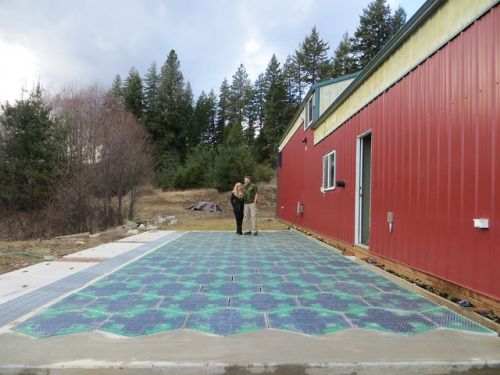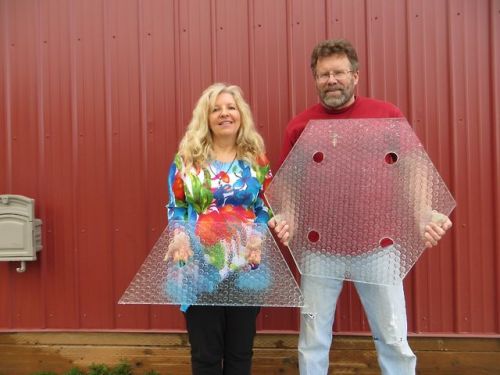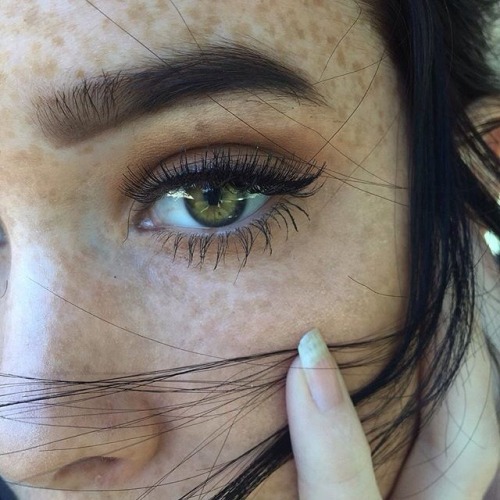Meanwhile In Ghana…
Meanwhile in Ghana…
🔥🔥
More Posts from Rordes and Others



IG - ashleyheiny


Saturn From here




ENDLESS ELECTRICITY: Here’s A Way Of Turning America’s Roads Into Gigantic Solar Panels
There are about 31,251 square miles of roads, parking lots, driveways, playgrounds, bike paths, and sidewalks in the lower 48 states. If Julie and Scott Brusaw have their way, they will all someday be replaced with solar panels.
For the better part of a decade, the Idaho couple has been working on prototyping an industrial-strength panel that could withstand the weight of even the largest trucks. They now appear to have cracked the formula, developing a specially textured glass coating for the panels that can not only bear tremendous loads but also support standard tire traction.
By their reckoning, at peak installation their panelized roads could produce more than three times the electricity consumed in the U.S.
The material could power electric vehicles through a receiver plate mounted beneath the vehicle and a transmitter plate is installed in the road.




Solar Palette
If you look at the Sun (which you shouldn’t, ever), you just see white light (for the second or so before your retinas are permanently scorched. That’s a mixture of all wavelengths of the electromagnetic spectrum that our eyes respond to, between 390 and 700 nanometers (or about 3,900 to 7,000 angstroms). And there is a lot we can learn about the Sun by viewing it in that range, from studying its undulating surface swirls to its rotation.
But scientists at places like NASA can learn even more by extending their “eyes” beyond the visible.That’s what this new mosaic from the Solar Dynamics Observatory shows us. It represents all of SDO’s detectable wavelengths and the ions and temperatures that those wavelengths represent. Viewing each of those can tell us a deeper, richer story of the solar physics at work in and on the fusion-powered energy source that feeds our planet.
I’ve captured the false colored hues that NASA scientists assign to each and put it in a digital palette. I can’t help but feel a bit amazed at not only the extreme temperatures at play (millions of Kelvin!) but also the extreme beauty. Our Sun is the best sun.
To dig into more detail about each wavelength and what it measures, check out this NASA article.
-
 zeeeblack liked this · 4 years ago
zeeeblack liked this · 4 years ago -
 earth-angel-elle liked this · 4 years ago
earth-angel-elle liked this · 4 years ago -
 chillimango reblogged this · 4 years ago
chillimango reblogged this · 4 years ago -
 chillimango liked this · 4 years ago
chillimango liked this · 4 years ago -
 moccadelight reblogged this · 4 years ago
moccadelight reblogged this · 4 years ago -
 sammyasam reblogged this · 4 years ago
sammyasam reblogged this · 4 years ago -
 sammyasam liked this · 4 years ago
sammyasam liked this · 4 years ago -
 kentaker liked this · 4 years ago
kentaker liked this · 4 years ago -
 woodofholly99 liked this · 4 years ago
woodofholly99 liked this · 4 years ago -
 hued-man-power liked this · 4 years ago
hued-man-power liked this · 4 years ago -
 luck25one reblogged this · 4 years ago
luck25one reblogged this · 4 years ago -
 luck25one liked this · 4 years ago
luck25one liked this · 4 years ago -
 tlb301 liked this · 4 years ago
tlb301 liked this · 4 years ago -
 secretdrawingsketchcookie reblogged this · 4 years ago
secretdrawingsketchcookie reblogged this · 4 years ago -
 solo-fame reblogged this · 4 years ago
solo-fame reblogged this · 4 years ago -
 mugegi reblogged this · 4 years ago
mugegi reblogged this · 4 years ago -
 mugegi liked this · 4 years ago
mugegi liked this · 4 years ago -
 duplicitous-nature reblogged this · 4 years ago
duplicitous-nature reblogged this · 4 years ago -
 joys-of-me reblogged this · 5 years ago
joys-of-me reblogged this · 5 years ago -
 dopesthopefiend reblogged this · 5 years ago
dopesthopefiend reblogged this · 5 years ago -
 dopesthopefiend liked this · 5 years ago
dopesthopefiend liked this · 5 years ago -
 thajokka liked this · 5 years ago
thajokka liked this · 5 years ago -
 internationalcaballero liked this · 5 years ago
internationalcaballero liked this · 5 years ago -
 krustyredd liked this · 5 years ago
krustyredd liked this · 5 years ago -
 krustyredd reblogged this · 5 years ago
krustyredd reblogged this · 5 years ago -
 thagoldenpapi liked this · 5 years ago
thagoldenpapi liked this · 5 years ago -
 oddsoulchild reblogged this · 5 years ago
oddsoulchild reblogged this · 5 years ago -
 benlaramie liked this · 6 years ago
benlaramie liked this · 6 years ago -
 cocoa-veg liked this · 6 years ago
cocoa-veg liked this · 6 years ago -
 cocoa-veg reblogged this · 6 years ago
cocoa-veg reblogged this · 6 years ago -
 heartofa15thlion liked this · 6 years ago
heartofa15thlion liked this · 6 years ago -
 tundeslove reblogged this · 6 years ago
tundeslove reblogged this · 6 years ago -
 tundeslove liked this · 6 years ago
tundeslove liked this · 6 years ago
